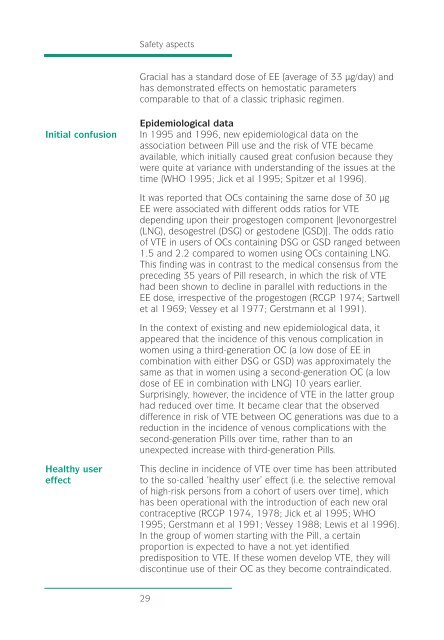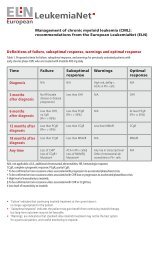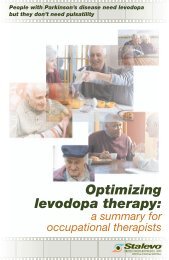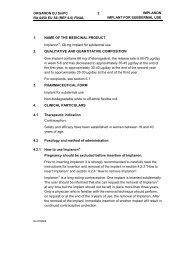Gracial ProdMonograph_cover - epgonline.org
Gracial ProdMonograph_cover - epgonline.org
Gracial ProdMonograph_cover - epgonline.org
Create successful ePaper yourself
Turn your PDF publications into a flip-book with our unique Google optimized e-Paper software.
Safety aspects<br />
<strong>Gracial</strong> has a standard dose of EE (average of 33 µg/day) and<br />
has demonstrated effects on hemostatic parameters<br />
comparable to that of a classic triphasic regimen.<br />
Initial confusion<br />
Epidemiological data<br />
In 1995 and 1996, new epidemiological data on the<br />
association between Pill use and the risk of VTE became<br />
available, which initially caused great confusion because they<br />
were quite at variance with understanding of the issues at the<br />
time (WHO 1995; Jick et al 1995; Spitzer et al 1996).<br />
It was reported that OCs containing the same dose of 30 µg<br />
EE were associated with different odds ratios for VTE<br />
depending upon their progestogen component [levon<strong>org</strong>estrel<br />
(LNG), desogestrel (DSG) or gestodene (GSD)]. The odds ratio<br />
of VTE in users of OCs containing DSG or GSD ranged between<br />
1.5 and 2.2 compared to women using OCs containing LNG.<br />
This finding was in contrast to the medical consensus from the<br />
preceding 35 years of Pill research, in which the risk of VTE<br />
had been shown to decline in parallel with reductions in the<br />
EE dose, irrespective of the progestogen (RCGP 1974; Sartwell<br />
et al 1969; Vessey et al 1977; Gerstmann et al 1991).<br />
In the context of existing and new epidemiological data, it<br />
appeared that the incidence of this venous complication in<br />
women using a third-generation OC (a low dose of EE in<br />
combination with either DSG or GSD) was approximately the<br />
same as that in women using a second-generation OC (a low<br />
dose of EE in combination with LNG) 10 years earlier.<br />
Surprisingly, however, the incidence of VTE in the latter group<br />
had reduced over time. It became clear that the observed<br />
difference in risk of VTE between OC generations was due to a<br />
reduction in the incidence of venous complications with the<br />
second-generation Pills over time, rather than to an<br />
unexpected increase with third-generation Pills.<br />
Healthy user<br />
effect<br />
This decline in incidence of VTE over time has been attributed<br />
to the so-called ‘healthy user’ effect (i.e. the selective removal<br />
of high-risk persons from a cohort of users over time), which<br />
has been operational with the introduction of each new oral<br />
contraceptive (RCGP 1974, 1978; Jick et al 1995; WHO<br />
1995; Gerstmann et al 1991; Vessey 1988; Lewis et al 1996).<br />
In the group of women starting with the Pill, a certain<br />
proportion is expected to have a not yet identified<br />
predisposition to VTE. If these women develop VTE, they will<br />
discontinue use of their OC as they become contraindicated.<br />
29
















